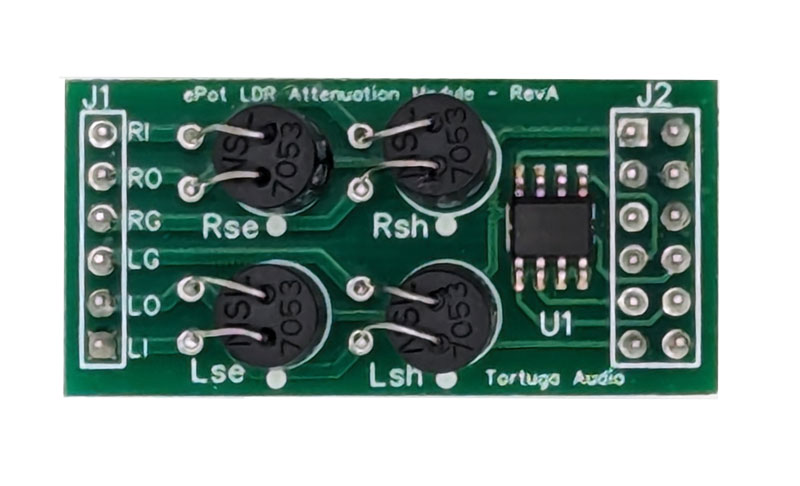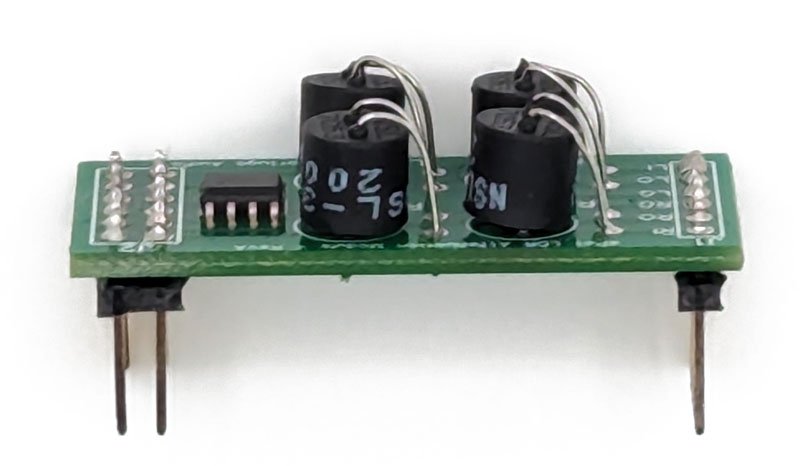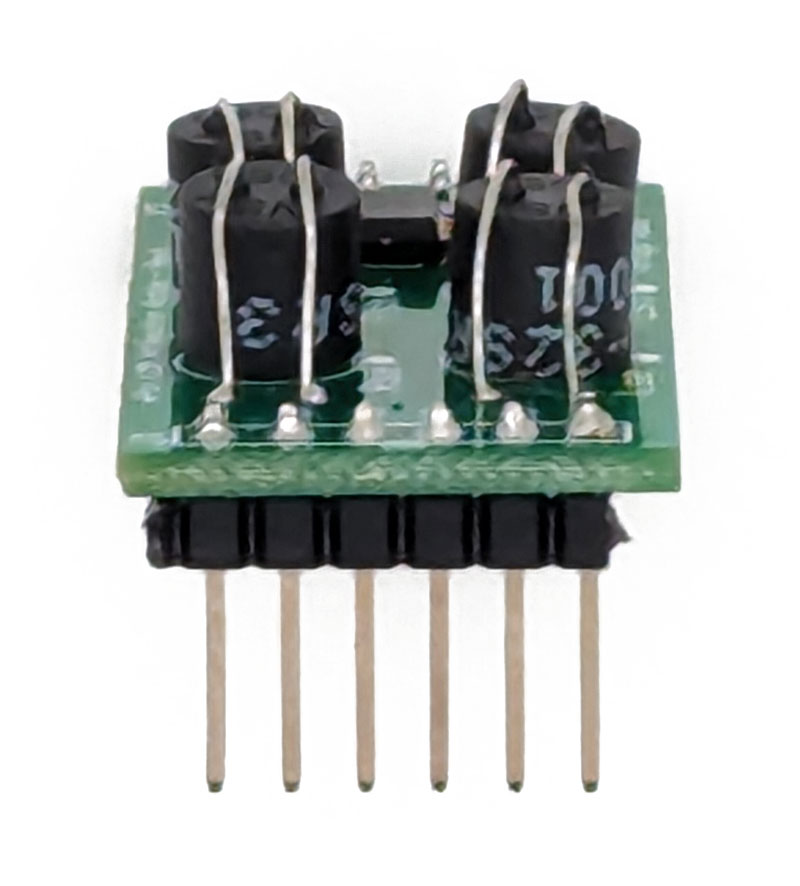LDR module | V3 & V4
$49.00
The plug-in LDR attenuation module is an essential part of the V4 LDR attenuator & preamp controller and contains 2 pairs of LDRs used as voltage dividers for controlling volume. An LDR attenuation module is usually purchased as an add-on item at the same time as the V4 board itself but can also be purchased here separately.
The V3 and V4 series Max and Mini preamp attenuator/controllers both require a quad plug-in LDR attenuation module. An LDR Module is usually purchased at the same time as a Max or Mini controller but can also be purchased separately here.



Each quad LDR module has 4 embedded LDRs, an EEPROM memory chip, plus 2 sets of pin headers that plug into corresponding sockets on the Max and Mini controller boards. The memory chip contains the attenuation/calibration data tables for each LDR at one or more impedance settings.
Each LDR module handles both left and right stereo channels. Each channel uses 2 LDRs in a series/shunt configuration. Each LDR is individually controlled by the microcontroller located on the Max or Mini board. The microcontroller uses the calibration data stored in the EEPROM memory chip to generate the resistance values needed for each of the 100 volume steps.
When used in a Max board, an LDR attenuation module can be re-calibrated as needed and can be re-configured for any impedance setting from 1k to 99k with 20k being the typical fixed default impedance level for setting #1. This is only possible with the Max and not the Mini. The Mini does not have the built-in ability to calibrate its LDR module. For this reason you must specify the fixed impedance of the LDR attenuation module when purchasing one for a Mini controller board.

